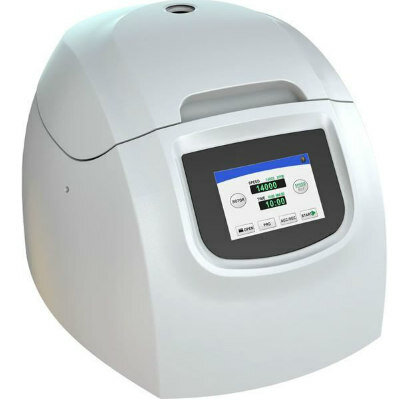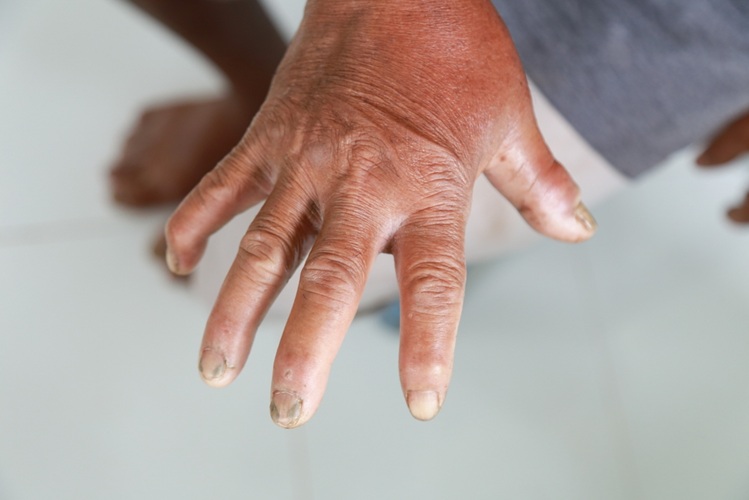Identifying Potential Drugs that Modify RNA Expression
|
By LabMedica International staff writers Posted on 12 Jul 2018 |
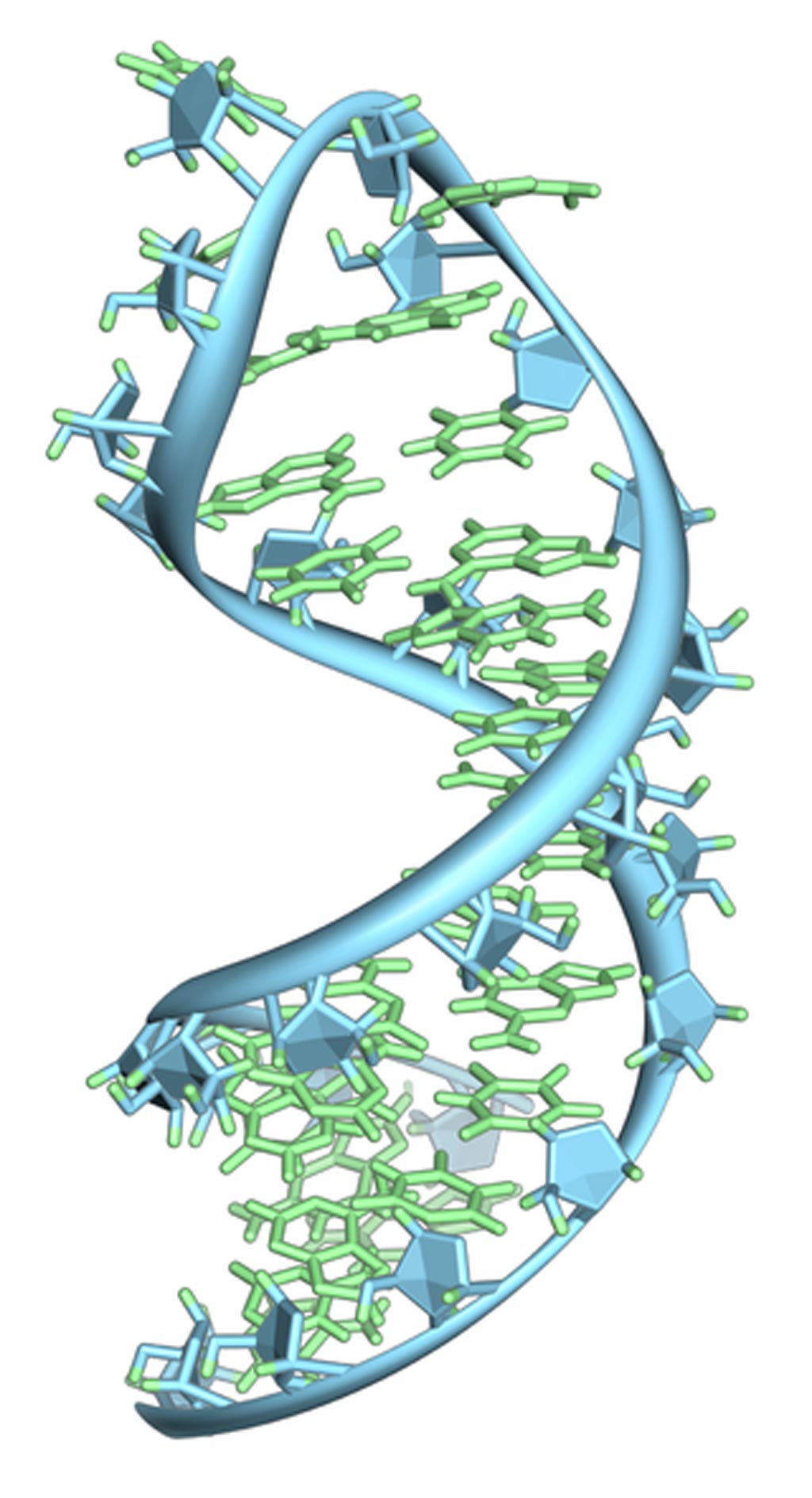
Image: A hairpin loop from a pre-mRNA. Highlighted are the nucleobases (green) and the ribose-phosphate backbone (blue). This is a single strand of RNA that folds back upon itself (Photo courtesy of Wikimedia Commons).
A team of drug developers has described a small molecule microarray-based approach that allows for unmodified low molecular weight compounds, including [U.S.] Food and Drug Administration-approved drugs, to be probed for binding to RNA motif libraries in a massively parallel format.
Potential RNA drug targets for small molecules are found throughout the human transcriptome, yet small molecules known to elicit a pharmacological response by directly targeting RNA have been limited to antibacterials. To expand the potential of small molecular weight drugs for cancer therapeutics, investigators at the Scripps Research Institute (Jupiter, FL, USA) devised "AbsorbArray", a system for rapidly testing a large library of existing drugs against a wide variety of RNA molecules.
The investigators reported in the June 28, 2018, online edition of the journal Cell Chemical Biology that this system revealed that several drug classes - including kinase and topoisomerase inhibitors - bound RNA. The latter avidly bound the motif found in the Dicer site of oncogenic microRNA (miR)-21 and inhibited the processing of this molecule both in vitro and in cells.
The most potent compound was shown to reverse the repression of a downstream protein target and inhibit a miR-21-mediated invasive phenotype. The compound's activity was canceled by overexpression of pre-miR-21. Target validation via chemical crosslinking and isolation by pull-down showed direct engagement of pre-miR-21 by the small molecule in cells demonstrated that RNAs should indeed be considered druggable.
"Known drugs made in the era when RNAs were not considered drug targets are, in fact, binding RNA, and causing some of the drug's effects by modulating targets that were not previously considered," said senior author Dr. Matthew D. Disney, professor of chemistry at the Scripps Research Institute. "We found broad drug classes that bind RNA. There is reason to believe that not only could known drugs bind RNA in a disease setting, but there is more evidence that one should consider RNA as a target in drug-discovery efforts."
"Drugs that patients take every day apparently target RNA, which is only recently being thought of as a target for small molecule medicines," said Dr. Disney. "As new RNAs are found to cause disease, routine medicines may be identified to target them. This would change the perception of RNAs as an afterthought in drug discovery and bring them to the forefront."
Related Links:
Scripps Research Institute
Potential RNA drug targets for small molecules are found throughout the human transcriptome, yet small molecules known to elicit a pharmacological response by directly targeting RNA have been limited to antibacterials. To expand the potential of small molecular weight drugs for cancer therapeutics, investigators at the Scripps Research Institute (Jupiter, FL, USA) devised "AbsorbArray", a system for rapidly testing a large library of existing drugs against a wide variety of RNA molecules.
The investigators reported in the June 28, 2018, online edition of the journal Cell Chemical Biology that this system revealed that several drug classes - including kinase and topoisomerase inhibitors - bound RNA. The latter avidly bound the motif found in the Dicer site of oncogenic microRNA (miR)-21 and inhibited the processing of this molecule both in vitro and in cells.
The most potent compound was shown to reverse the repression of a downstream protein target and inhibit a miR-21-mediated invasive phenotype. The compound's activity was canceled by overexpression of pre-miR-21. Target validation via chemical crosslinking and isolation by pull-down showed direct engagement of pre-miR-21 by the small molecule in cells demonstrated that RNAs should indeed be considered druggable.
"Known drugs made in the era when RNAs were not considered drug targets are, in fact, binding RNA, and causing some of the drug's effects by modulating targets that were not previously considered," said senior author Dr. Matthew D. Disney, professor of chemistry at the Scripps Research Institute. "We found broad drug classes that bind RNA. There is reason to believe that not only could known drugs bind RNA in a disease setting, but there is more evidence that one should consider RNA as a target in drug-discovery efforts."
"Drugs that patients take every day apparently target RNA, which is only recently being thought of as a target for small molecule medicines," said Dr. Disney. "As new RNAs are found to cause disease, routine medicines may be identified to target them. This would change the perception of RNAs as an afterthought in drug discovery and bring them to the forefront."
Related Links:
Scripps Research Institute
Latest BioResearch News
- Genome Analysis Predicts Likelihood of Neurodisability in Oxygen-Deprived Newborns
- Gene Panel Predicts Disease Progession for Patients with B-cell Lymphoma
- New Method Simplifies Preparation of Tumor Genomic DNA Libraries
- New Tool Developed for Diagnosis of Chronic HBV Infection
- Panel of Genetic Loci Accurately Predicts Risk of Developing Gout
- Disrupted TGFB Signaling Linked to Increased Cancer-Related Bacteria
- Gene Fusion Protein Proposed as Prostate Cancer Biomarker
- NIV Test to Diagnose and Monitor Vascular Complications in Diabetes
- Semen Exosome MicroRNA Proves Biomarker for Prostate Cancer
- Genetic Loci Link Plasma Lipid Levels to CVD Risk
- Newly Identified Gene Network Aids in Early Diagnosis of Autism Spectrum Disorder
- Link Confirmed between Living in Poverty and Developing Diseases
- Genomic Study Identifies Kidney Disease Loci in Type I Diabetes Patients
- Liquid Biopsy More Effective for Analyzing Tumor Drug Resistance Mutations
- New Liquid Biopsy Assay Reveals Host-Pathogen Interactions
- Method Developed for Enriching Trophoblast Population in Samples
Channels
Clinical Chemistry
view channel
‘Brilliantly Luminous’ Nanoscale Chemical Tool to Improve Disease Detection
Thousands of commercially available glowing molecules known as fluorophores are commonly used in medical imaging, disease detection, biomarker tagging, and chemical analysis. They are also integral in... Read more
Low-Cost Portable Screening Test to Transform Kidney Disease Detection
Millions of individuals suffer from kidney disease, which often remains undiagnosed until it has reached a critical stage. This silent epidemic not only diminishes the quality of life for those affected... Read more
New Method Uses Pulsed Infrared Light to Find Cancer's 'Fingerprints' In Blood Plasma
Cancer diagnoses have traditionally relied on invasive or time-consuming procedures like tissue biopsies. Now, new research published in ACS Central Science introduces a method that utilizes pulsed infrared... Read moreMolecular Diagnostics
view channel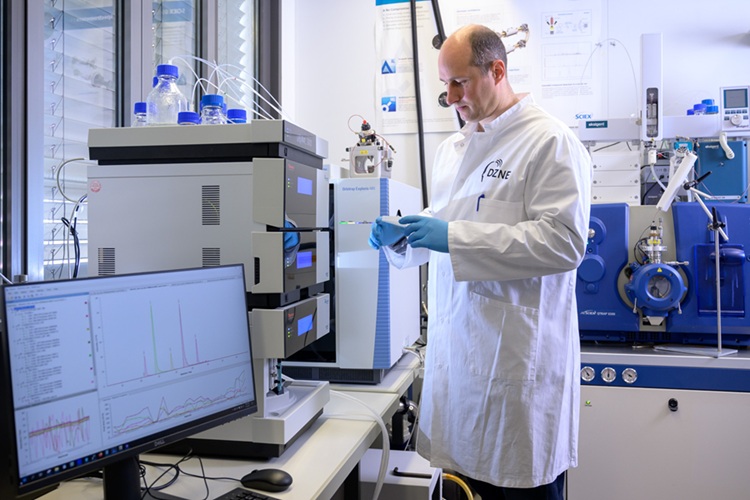
Blood Biomarker Test Could Detect Genetic Predisposition to Alzheimer’s
New medications for Alzheimer’s disease, the most common form of dementia, are now becoming available. These treatments, known as “amyloid antibodies,” work by promoting the removal of small deposits from... Read more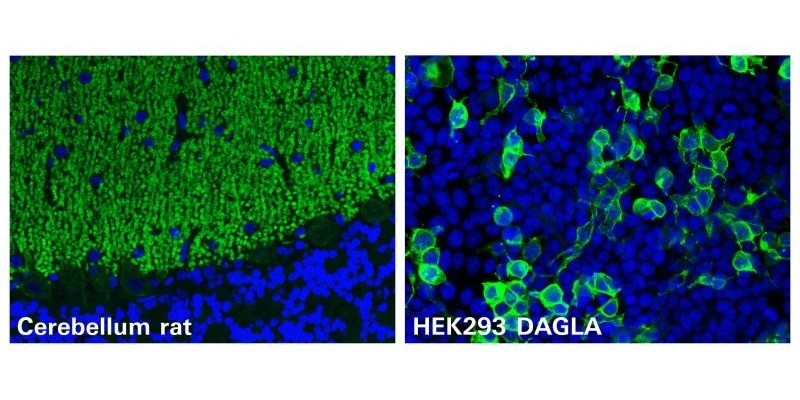
Novel Autoantibody Against DAGLA Discovered in Cerebellitis
Autoimmune cerebellar ataxias are strongly disabling disorders characterized by an impaired ability to coordinate muscle movement. Cerebellar autoantibodies serve as useful biomarkers to support rapid... Read more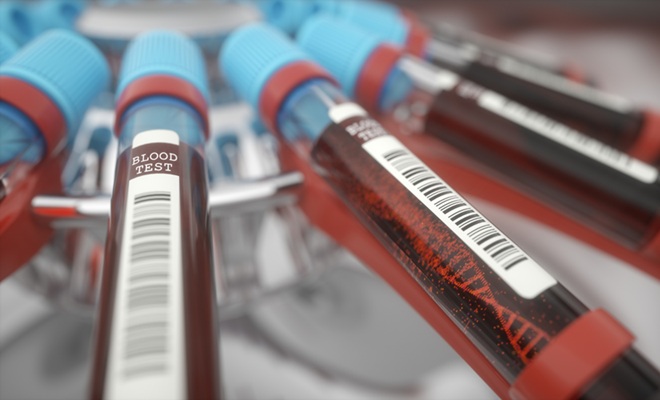
Gene-Based Blood Test Accurately Predicts Tumor Recurrence of Advanced Skin Cancer
Melanoma, an aggressive form of skin cancer, becomes extremely difficult to treat once it spreads to other parts of the body. For patients with metastatic melanoma tumors that cannot be surgically removed... Read moreHematology
view channel
New Scoring System Predicts Risk of Developing Cancer from Common Blood Disorder
Clonal cytopenia of undetermined significance (CCUS) is a blood disorder commonly found in older adults, characterized by mutations in blood cells and a low blood count, but without any obvious cause or... Read more
Non-Invasive Prenatal Test for Fetal RhD Status Demonstrates 100% Accuracy
In the United States, approximately 15% of pregnant individuals are RhD-negative. However, in about 40% of these cases, the fetus is also RhD-negative, making the administration of RhoGAM unnecessary.... Read moreImmunology
view channel
Stem Cell Test Predicts Treatment Outcome for Patients with Platinum-Resistant Ovarian Cancer
Epithelial ovarian cancer frequently responds to chemotherapy initially, but eventually, the tumor develops resistance to the therapy, leading to regrowth. This resistance is partially due to the activation... Read more
Machine Learning-Enabled Blood Test Predicts Immunotherapy Response in Lymphoma Patients
Chimeric antigen receptor (CAR) T-cell therapy has emerged as one of the most promising recent developments in the treatment of blood cancers. However, over half of non-Hodgkin lymphoma (NHL) patients... Read moreMicrobiology
view channel
Handheld Device Delivers Low-Cost TB Results in Less Than One Hour
Tuberculosis (TB) remains the deadliest infectious disease globally, affecting an estimated 10 million people annually. In 2021, about 4.2 million TB cases went undiagnosed or unreported, mainly due to... Read more
New AI-Based Method Improves Diagnosis of Drug-Resistant Infections
Drug-resistant infections, particularly those caused by deadly bacteria like tuberculosis and staphylococcus, are rapidly emerging as a global health emergency. These infections are more difficult to treat,... Read more
Breakthrough Diagnostic Technology Identifies Bacterial Infections with Almost 100% Accuracy within Three Hours
Rapid and precise identification of pathogenic microbes in patient samples is essential for the effective treatment of acute infectious diseases, such as sepsis. The fluorescence in situ hybridization... Read morePathology
view channel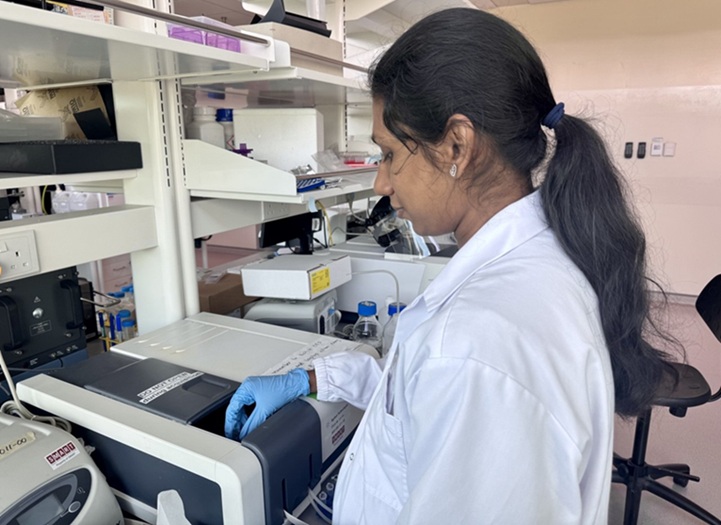
Novel UV and Machine Learning-Aided Method Detects Microbial Contamination in Cell Cultures
Cell therapy holds great potential in treating diseases such as cancers, inflammatory conditions, and chronic degenerative disorders by manipulating or replacing cells to restore function or combat disease.... Read more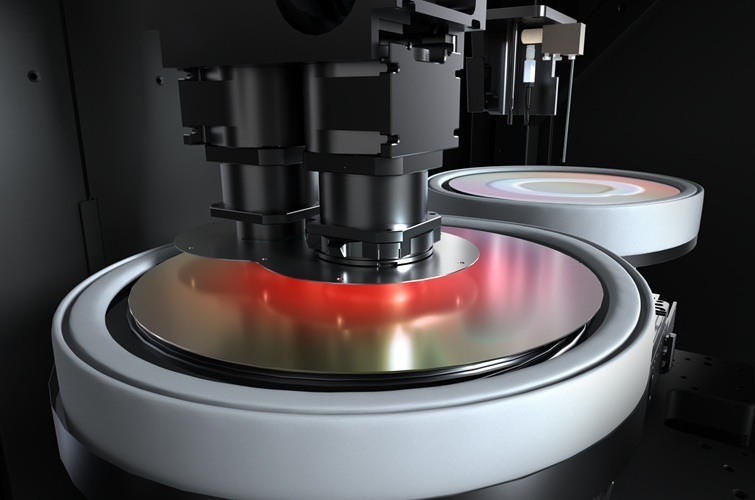
New Error-Corrected Method to Help Detect Cancer from Blood Samples Alone
"Liquid biopsy" technology, which relies on blood tests for early cancer detection and monitoring cancer burden in patients, has the potential to transform cancer care. However, detecting the mutational... Read more
"Metal Detector" Algorithm Hunts Down Vulnerable Tumors
Scientists have developed an algorithm capable of functioning as a "metal detector" to identify vulnerable tumors, marking a significant advancement in personalized cancer treatment. This breakthrough... Read more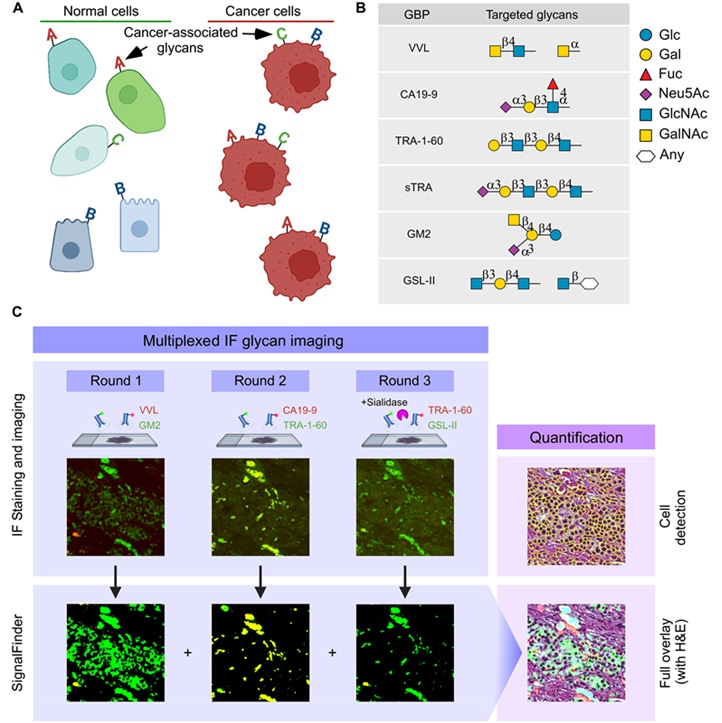
Novel Technique Uses ‘Sugar’ Signatures to Identify and Classify Pancreatic Cancer Cell Subtypes
Pancreatic cancer is often asymptomatic in its early stages, making it difficult to detect until it has progressed. Consequently, only 15% of pancreatic cancers are diagnosed early enough to allow for... Read moreTechnology
view channel
Disposable Microchip Technology Could Selectively Detect HIV in Whole Blood Samples
As of the end of 2023, approximately 40 million people globally were living with HIV, and around 630,000 individuals died from AIDS-related illnesses that same year. Despite a substantial decline in deaths... Read more
Pain-On-A-Chip Microfluidic Device Determines Types of Chronic Pain from Blood Samples
Chronic pain is a widespread condition that remains difficult to manage, and existing clinical methods for its treatment rely largely on self-reporting, which can be subjective and especially problematic... Read more
Innovative, Label-Free Ratiometric Fluorosensor Enables More Sensitive Viral RNA Detection
Viruses present a major global health risk, as demonstrated by recent pandemics, making early detection and identification essential for preventing new outbreaks. While traditional detection methods are... Read moreIndustry
view channel
Cepheid and Oxford Nanopore Technologies Partner on Advancing Automated Sequencing-Based Solutions
Cepheid (Sunnyvale, CA, USA), a leading molecular diagnostics company, and Oxford Nanopore Technologies (Oxford, UK), the company behind a new generation of sequencing-based molecular analysis technologies,... Read more
Grifols and Tecan’s IBL Collaborate on Advanced Biomarker Panels
Grifols (Barcelona, Spain), one of the world’s leading producers of plasma-derived medicines and innovative diagnostic solutions, is expanding its offer in clinical diagnostics through a strategic partnership... Read more









